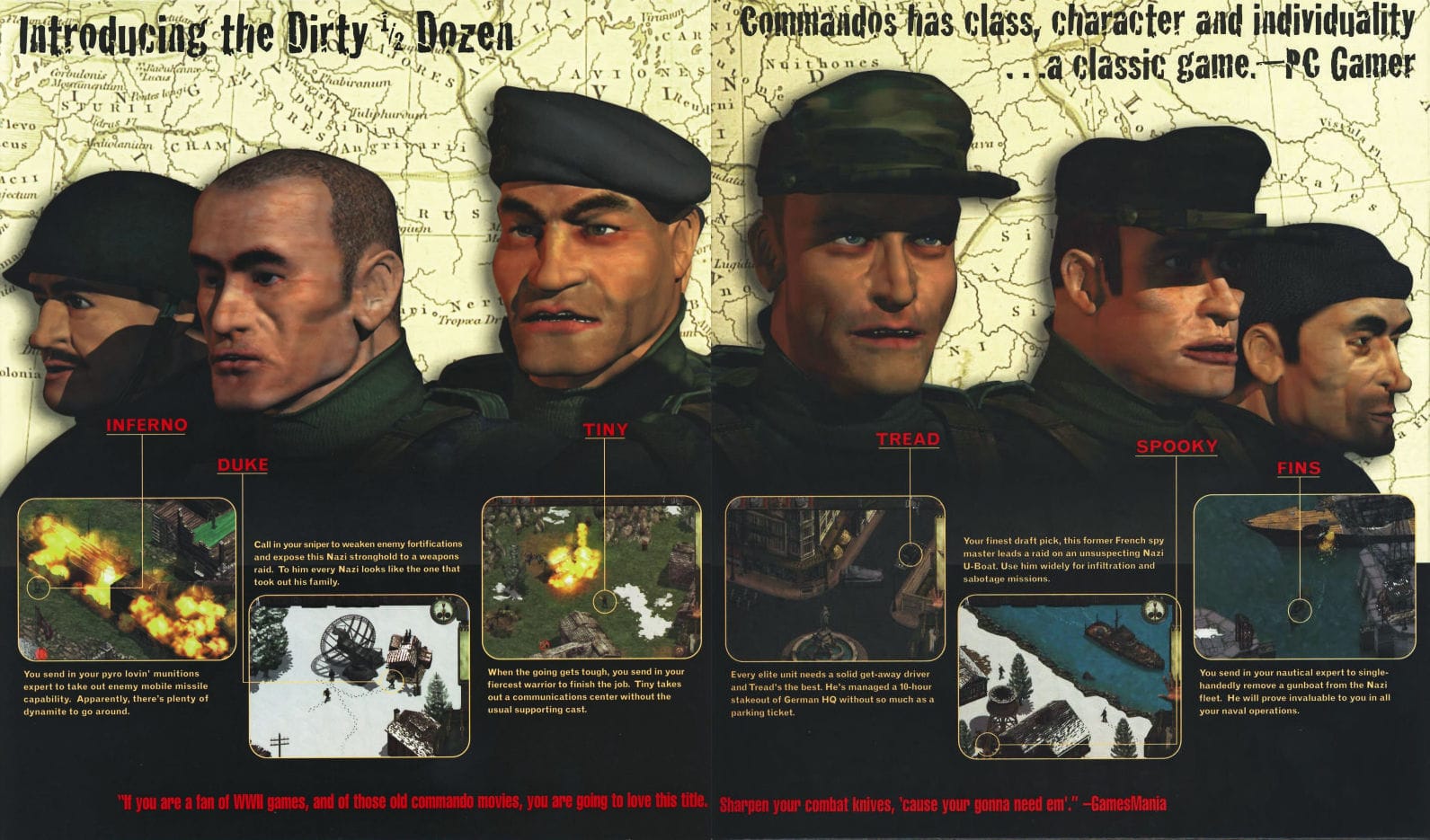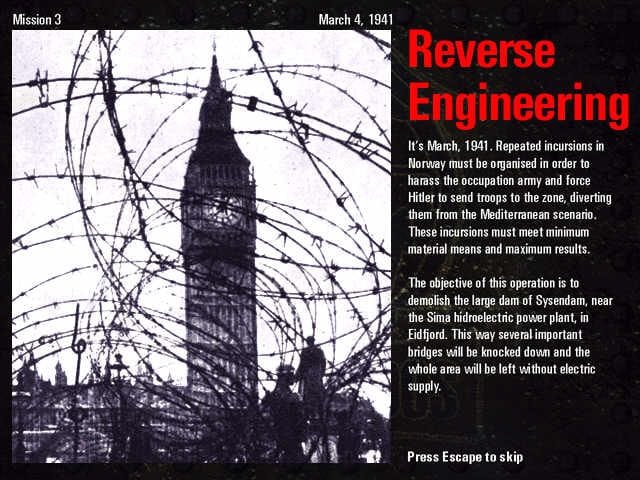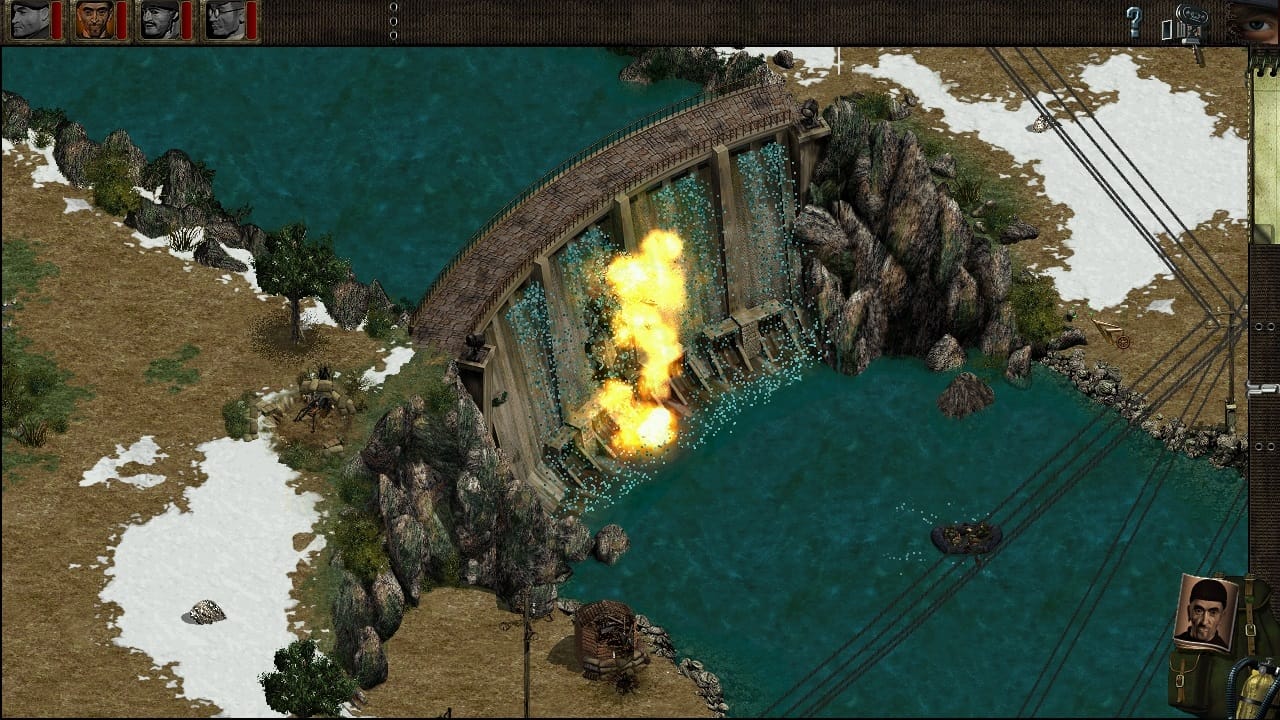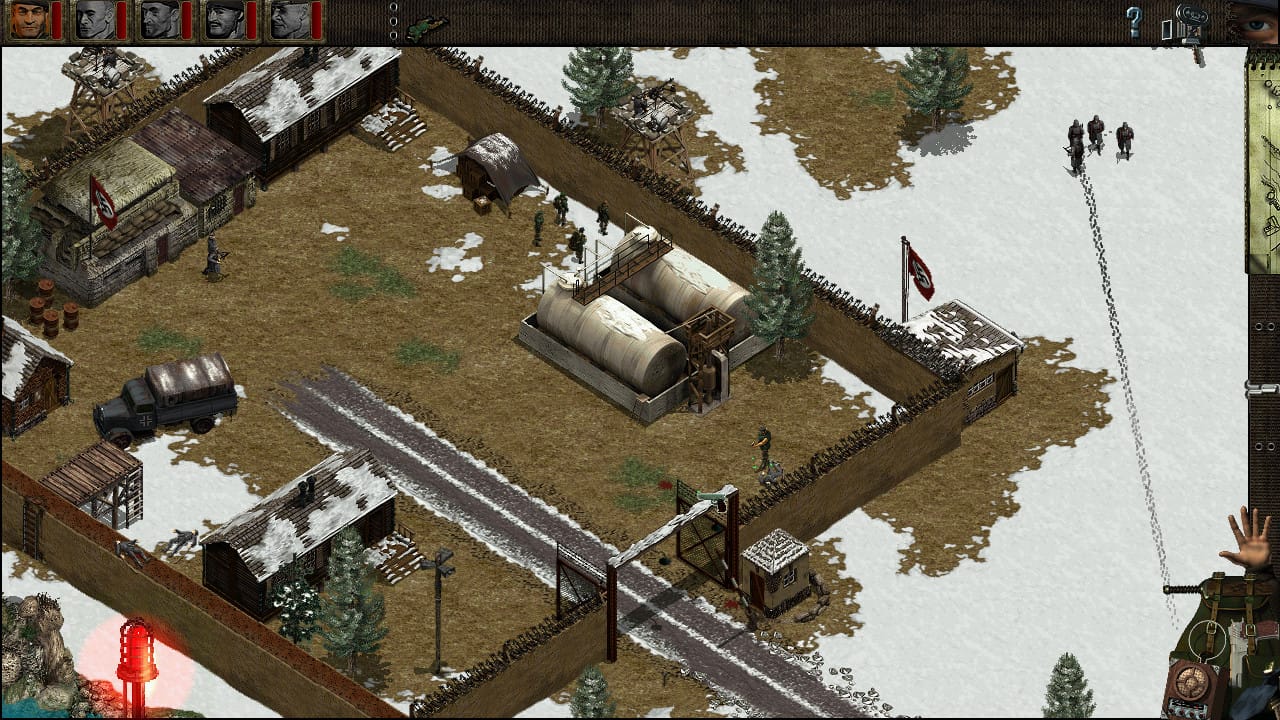The most significant year in video games history, at least of the last century, was 1998. The Legend of Zelda: Ocarina of Time, Metal Gear Solid, Rainbow Six, Tekken 3, Half-Life, Gran Turismo, Grim Fandango, Banjo-Kazooie, Thief: The Dark Project, Baldur's Gate, Crash Bandicoot, StarCraft, Need for Speed III: Hot Pursuit, Oddworld: Abe's Exoddus, Fallout 2, Turok 2: Seeds of Evil, Blood II: The Chosen, Unreal, Mario Party, Spyro the Dragon, Marvel vs. Capcom, Soulcalibur. You will get tired of reading their names, but I don't know anyone who has gotten tired of playing them. It was also the year of the Third Edition of Warhammer and the closure of Tempest block and the beginning of the Urza's Saga in Magic: The Gathering. And it was the year of Commandos: Behind Enemy Lines, a simple yet incredibly difficult video game, that left an indelible mark on those who tried to finish it.
The First Commandos
In the spectrum of real-time strategy, in the '90s everyone made games about civilizations (Civilization, Dune, Age of Empires, StarCraft) or management of some type of institution or area (Theme Park, Sim City, the Tycoons saga). Collect resources, build bases, conquer this or any other planet. In a loop. At a time when the isometric view dominated the genre, a small Spanish studio called Pyro Studios — working with less than a million dollars — managed to create one of the most memorable RTS games ever made.
Commandos: Behind Enemy Lines is a game of what is now known as tactical stealth, a genre it helped shape and define and of which it is an unavoidable reference, as we will see. It is set in the Second World War and allows us to control a sextet of allied soldiers infiltrated behind enemy lines of the Nazi occupation. It features 20 missions in three large blocks that take this elite mini-troop through Norway, North Africa, France, Belgium, and Germany, until they manage to disrupt the Third Reich's plans.
In the early '40s, the Nazis advance through Europe and in the face of the imminent invasion of the United Kingdom, British Colonel Montague Smith decides to form a secret team of warcraft experts to carry out 20 missions — and 8 more in Commandos: Beyond the Call of Duty. Typical trench things like sabotaging communications, rescuing a prisoner, or infiltrating the Gundelfingen fortress to recover the plans for the atomic bomb. Well, "typical", let's say.
Green Beret, Sniper, Sapper, Marine, Driver, Spy. Commandos was never a role-playing game but its small cast functioned as a perfect role-playing party each with their own items and unique abilities. The Green Beret was super fast and could carry bodies, the Marine had a harpoon for silent kills at medium range and swam like a madman, the Sapper had his bear trap. And all, all, had lines of dialogue that became part of Spanish-speaking gamer folklore and ended up as meme phrases of millennial culture from the cavernous "Let's go!" of the Chad Green Beret to the hysterical "Alarm, alarm!" of the cowardly Nazis, passing through "I'm afraid that's not possible", "Sir, I've been hit" and "It's done, boss". And all this barrage of successes, plus the ones we will see, came from Spain.
Nepo Babies in Control
Pyro Studios was founded in 1996 in Madrid by the brothers Ignacio and Javier Pérez Dolset, sons of José Luis Pérez Dolset, creator of Proein, a distributor that among other things was the one that introduced the 16-bit Sega in Spain. Commandos: Behind Enemy Lines, which took a year and a half of work, was their first game and their most resounding success. Leading its development was Gonzalo "Gonzo" Suárez (son of filmmaker Gonzalo Suárez Morilla), who had already worked at Opera Soft and then at Dinamic Multimedia (the ones behind the glorious PC Fútbol). Three nepo babies, a team of 15 people, a record budget and two years later, in June 1998, Commandos: Behind Enemy Lines cameout and became the top-selling video game in Spain — and reached number one in over 30 countries.
In 2018, the IP changed hands to Kalypso, the producer behind the Tropico saga, another tier 2 RTS that became a multiplatform saga. But the most surprising thing is what happened next with Javier Pérez Dolset. Over time, the brothers transformed the studio into Grupo ZED, dedicated to digital animation and mobile gaming, and responsible for movies like Planet 51 or Mortadelo y Filemón contra Jimmy el Cachondo. But the company went bankrupt in 2017 and Javier ended up detained and investigated for a diversion of more than 100 million euros in public subsidies that never reached ZED. Around that time, he ended up in a lawsuit against a Russian magnate, Mikhail Fridman, whom he accused of causing ZED's bankruptcy. And just recently, this year, he got caught up in the "Leire Case" and is being investigated for bribery, influence peddling, and obstruction of justice in the course of an operation against officials of the Civil Guard and the Anti-Corruption Prosecutor's Office. Quite the plot twist, right?
And one more thing, do you know who connected Pyro Studios with the distributor that would give it worldwide exposure, Eidos Interactive? It was Ian Livingstone, one of the creatorsof Games Workshop and Warhammer, who met the Pérez Dolset brothers by chance.

Why I keep Remembering Commandos: Behind Enemy Lines?
Let's get back to the game, which by the way can be found for 5 USD on Steam or for free on ClasicosBasicos, one of my favorite retrogaming websites. To keep it short, here are some reasons why I always remember Commandos.
• The setting was fantastic, right from that '80s war movie cover, through the documentary-style cutscenes, the narrated mission briefs, the scenarios that looked incredibly detailed wargame models and the voices.
• The variability derived from the gameplay and also from the narrative, where each area not only presented a different geography but also a moment of WWII. That's also why the strategies, the roster, and the ways of resolution changed all the time.
• The extremely high difficulty was memorable and its system of decoration at the end of each mission invited you to want to replay them and do them better and faster, contributing to that feeling that it always gave me of being also a bit of a puzzle with little soldiers.
• The phrases of that half dozen supermen, one better than the other.
• The hypnotic pleasure of studying the map and checking the enemy vision cones and their movement loops, flashing the perfect execution. CINEMA.



Stealth Tactics Beyond Commandos
Outside of its own success, or rather starting from it, Commandos: Behind Enemy Lines not only ensured its continuity but gave rise to a new genre, a mix of real-time strategy, cooperative stealth, puzzle, and control of multiple characters. What we now know as stealth tactics. To understand this, we have to go back to 1998: that same year also saw the release of Metal Gear Solid and Thief: The Dark Project. The turn of the century was a feast for stealth game lovers.
Anyway, Commandos continued to deliver sequels for a decade and has some very fresh remasters for platforms (Steam, GOG) and reboots like Commandos: Origins, all in the hands of Kalypso. But, as I was saying, the delivery of Commandos also continues in other games that use the same framework: few units with complementary skills, large scenarios, more puzzle feeling than shooter, "studied" enemies that follow a script, and the high cost of messing up.
Desperados: Wanted Dead or Alive (2001), from Spellbound Entertainment, takes this scheme to the Wild West, with outlaws instead of commandos. The saga continues until 2020, with Desperados III by the German studio Mimimi Games.
Shadow Tactics: Blades of the Shogun (2016), also from Mimimi, shifts everything to feudal Japan, with ninjas, samurais, and assassins, featuring beautiful but very tough levels.
Partisans 1941 (2020), from the Russian studio Alter Games, has Soviet communists fighting against the Nazi occupation, with gameplay that adds some survival and management.

